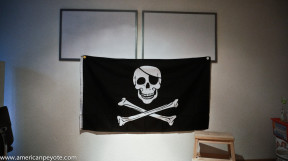
The Pirate Room is a place of reflection, of ideation, of brainstorming, of prototyping, of building. I built up a pirate room in my house because I found it essential to have a place to work. Not an office with a desk and computer, but with…purpose. A place for ideas to flow, to have space to move around, and to be able to record and work with ideas. A place to prototype, to draw and create in. Here are a few key attribute, elements if you will to include in your own ideation space.
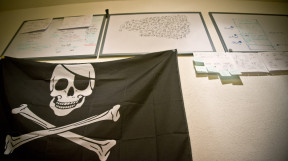 1: A Pirate Flag
1: A Pirate Flag
Well, actually a pirate flag is not essential, but a symbol of purpose is. The pirate flag represents the sense, the motivation of doing things differently, against the grain, a tad outside the bounds of society or the standard way of approaching any one product or idea space. It’s imagining an interactive screen instead of a computer, or removing the need for a computer completely when designing a new smart watch. The flag is to remind me to think differently when approaching product ideas, pain points, thoughts of philosophy and everything else in between.
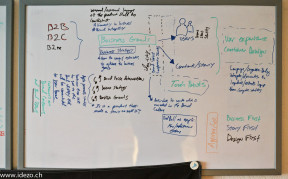 2: Whiteboards
2: Whiteboards
As many as possible. If you walk into a Google office you’ll probably see more whiteboards than you can count. When I was in college I put contact paper over all the walls so I could write on them. Having multiple whiteboards means you can draw out ideas, cross reference with other concepts, build up quick wireframes, and diagrams, and discuss with the people around you. When you have something good take a picture drop into the ideation folder of your projects. The pirate flag is hanging by the boards reminding me to think different.
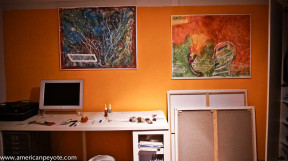 3: Art
3: Art
Yes, art. My pirate room has one orange wall and on that wall is my Gonzo Art. I painted these during 1 Day of Art Copenhagen and makes me think of non-linearity and abstraction. The paintings evolved from my work with Photoshop and a desire to get a way from digital imaging and computers as a method of creation. Art is organic, and grounding and that’s important when your mind is getting lost in the sea of digital and internet products and prototyping out ideas for new markets.
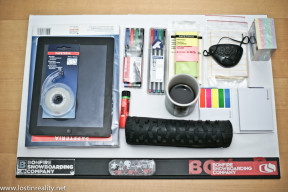 4: Prototyping Tools
4: Prototyping Tools
Ideas are worthless little things taking up space in your brain. It’s only when you start to build things and make them at least somewhat tangible that you can really start to play around and evolve product concepts. Paper prototyping allows you to build out representations of your ideas, hold them, test them, etc. I like to draw, it takes time and in that time you re-evaluate what you’re doing and what the purpose of the product is. I like large pieces of paper for these thing, A3 / A2 size is nice as you can make idea diagrams, put down post-it notes, draw out user interfaces, etc. Then on the iPad or computer I can build up interactive prototypes with apps like AppCooker.
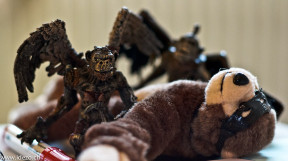 5: Flying Monkeys
5: Flying Monkeys
YES!!!! Flying monkeys are essential. Or rather, a sense of humor and an appreciation for the absurd is healthy anytime you’re trying to create something new or cleverly repackaged. I have two types of flying monkeys, one is from McFarlane Toys. They are part of the series Twisted Land of Oz. They are a twisted re-imagination of the characters from The Wonderful Wizard of Oz. They remind me that innocent things are easily re-created as monsters, and the same is true of innovations. The context of an idea determines the purpose and the expression of the idea. The other one is a plush monkey doll with elastic rubber arms that can fly across a room and emit a high-pitched monkey scream while in flight. Why? Cause fun is essential in life and during creation. Never forget to laugh. A serious world is a boring world, and this is a Pirate Room.
